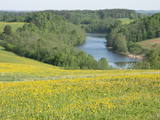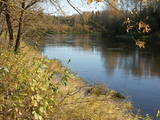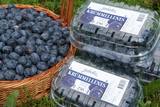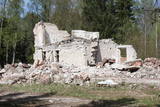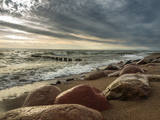| Nr | Nosaukums | Apraksts |
|---|---|---|
|
Meklējams Sakas upes labajā krastā - Dzintaru ielā 1. Tas izvietots Pāvilostas pirmajā mūra (no sarkaniem ķieģeļiem un laukakmeņiem) ēkā , kuru cēla 1879. g. kā loču māju. Muzeja krājums veltīts novada un piekrastes zvejniecības un jūrniecības vēsturei. Krājumā apskatāmi Sakas pagastā atrastie akmens un kaula cirvji, kaltas bronzas saktas un jostas un unikāls eksponāts – medus spiede. Blakus atrodas laivu māja ar lielgabarīta eksponātiem. 2012. g. tiks atklāts mansards, kurā plānotas izstādes un tematiski pasākumi. + 371 63498276. Vērts iepazīt arī Pāvilostas vecāko daļu – Āķgalu, kas ir tipisks 19. gs. - 20. gs. piekrastes ciema apbūves paraugs. |
||
|
Latvijai samērā unikāla teritorija – gāršas tipa mežs, kurā aug ozoli (daudz dižozolu), liepas, oši u.c. lapukoki. Vietējā gida – mežziņa pavadībā var izstaigāt nelielu gāršas nogabalu, iepazīt raksturīgākos gāršas apdzīvotājus un to nozīmi. Ukru gārša – dabas liegums
|
||
|
Atpūtas vieta "Buki" atrodas Ventspils novadā, Baltijas jūras piekrastes aizsargjoslā. "Buki" ir klusa vieta atpūtai, kur iespējams baudīt Latvijas lauku mieru. Piedāvā atpūtu ģimenēm ar bērniem, draugu kompānijām vai vienkārši dabu mīlošiem cilvēkiem. Atpūtas vietas teritorija ir labiekārtota un tajā ir iespējama makšķerēšana piemājas dīķī, sporta aktivitāte kā volejbols, kā arī teritorijā ir atrakcijas bērniem - batuts un šūpoles. Nakšņošanas iespējas 6 veidu kotedžās, 3 veidu numuros viesu namā un 2 brīvdienu dzīvokļos, kā arī teltīs un treilerī. "Buki" piedāvā vietas svinībām gan lapenēs, gan svinību teltī (līdz 100 personām), arī divas pirtiņas. Atpūtas vietas teritorijā ir mini ZOO, kurā iespējams ne tikai dzīvē ieraudzīt dažādu sugu un dzimtu pārstāvjus, bet arī tos apčubināt un pabarot. Mini ZOO var sadzirdēt pērļu vistas, dziedošu ēzeli Janci, redzēt krāšņo pāva asti, izbaudīt alpakas un lamas vilnas mīkstumu, satikt aci pret aci dažādus kamieļus un daudz ko citu. Tāpat saimnieki piedāvā dažādu mājražojumu (kūpināta gaļa un zivis, kazas siers, olas, desas, sezonas augļus un dārzeņus u.c. produkti) degustācijas. |
||
|
Dabas parks veidots Latgales augstienes Dagdas pauguraines izteiktākās daļas un Baltijas dziļākā ezera (63,1 m) – Drīdza, tā salu (kopā – 9 salas), Ota ezera un to apkārtnes aizsardzībai. Skaistākie skati paveras no senā latgaļu pilskalna – Sauleskalna un Drīdza ezera austrumu daļā. Ezera krastos pieejamas naktsmītnes. |
||
|
Teritorija, kas aptuveni 20 km garumā „piekļāvusies” abiem Aiviekstes upes krastiem. Dabas parka galvenā vērtība ir palieņu pļavas (un citi pļavu biotopi), kas ir ļoti nozīmīga daudzu augu un dzīvnieku (īpaši – putnu) sugu dzīves vieta. Ūdenstūristiem, kas laivo pa Aivieksti, nakšņošana ir jāplāno tikai šim mērķim paredzētās vietās!
|
||
|
Skaistā vietā netālu no Kāla ezera pauguru nogāzēs audzē avenes, zemenes, dzērvenes un krūmmellenes. "Jāņkalni" izveidoti 1992. gadā un ir ģimenes saimniecība. Sezonas laikā var novākt ogas, iegādāties un degustēt produkciju, kā arī pieteikties izzinošā ekskursijā. Iespējams arī pasūtīt produktus. |
||
|
Knīpupju Sakarnieku daļa Bārtas mežos ir pamesta un netiek apsaimniekota. Degradēts objekts, ēkas tiek demontētas būvmateriālu ieguvei. Atrodas blakus objektam nr. 30047.
|
||
|
Līgatnes dabas takas, dibinātas 1975. gadā, ar mērķi iepazīstināt parka apmeklētājus ar Latvijas dabu, vietējo augu un dzīvnieku valsti, savvaļas zīdītājdzīvnieku sugām, dabas bioloģisko daudzveidību un aizsardzību. Pirmie Līgatnes dabas taku iemītnieki bija seši staltbrieži un meža cūkas. Līgatnes dabas takās apskatāmi dažādu savvaļas sugu dzīvnieki, vērojamas neskartas dabas ainavas (arī no 22 metrus augstā skatu torņa), saklausāmas mežu un pļavu balsis, skatāma krāšņu gravu un klinšu ieskauta Gauja un tās senleja, kā arī baudāma aktīva atpūta un brīnišķīgs miers. |
||
|
Vēsturnieki teic, ka līvi jeb lībieši senajā Latvijas teritorijā atpazīstami laikā jau no 10. gadsimta. Viņi apdzīvoja Ziemeļkurzemi, Daugavas un Gaujas lejteces, no Ģipkas līdz Ovišiem, kur joprojām atrodami piejūras zvejniekciemi ar lībisku izcelsmi. Piejūras iedzīvotāji vienmēr ēduši dažādi gatavotas jūras, upju un ezeru zivis: kūpinātas butes, reņģes, mencas, brekšus un lučus, ceptus nēģus, sālītas brētliņas, reņģes un siļķes. Svaigs mazsālīts Baltijas lasis ir delikatese. Uz oglēm cep veselas zivis: zandartu, foreli, karpu, samu vai asari. Viesi var piedalīties zivju ķeršanā un kūpināšanā. No visa pa druskai var pamēģināt, pasūtot degustāciju galdu. Rudzi nogaršojami rupjā un saldskābā maizē, sklandraušos, pat pankūkās un piparkūkās. Vidzemes pusē cep miežu plāceņus. Gardi gatavo mājlopu un mājputnu gaļas ēdienus, gadu mijā – cūkas šņukuru ar zirņiem vai krāsnī ceptu piena sivēnu. Krogu piedāvājumā ir medījumi ar brūklenēm, sēnēm un citām savvaļas garšām. Piedevās pasniedz rudens saknes, ķirbi, pupas vai grūbas. Ēdienus papildina grēcīgi gardas mērces. Tradicionālos pīrāgus, plātsmaizes, kliņģerus, ābolkūkas un medus kūkas baudiet svētkos un ikdienā. Gardi ir saldēdieni no rudzu rīvmaizes, dzērvenēm, brūklenēm un saldā krējuma. Kurzemē iecienītas ir melleņu klimpas, vasarā gatavo daudz desertu ar svaigām ogām. Dabas spēku veselībai var uzņemt ar smaržīgām zāļu tējām un medu. Reibinoši mirkļi piedzīvojami mājas vīnu degustācijās un alus baudīšanā. |
||
|
Tihuse saimniecībā Muhu salā nodarbojas ar zirgu audzēšanu, kur piedāvā arī autentisku ēdienu, turklāt tiem, kas cieš no dažādām pārtikas nepanesībām, tiks piedāvāti īpaši ēdieni. Ļoti iecienītas ir izjādes ar zirgiem, pēc kura seko pikniks. Kā īpašu gardumu piedāvājam lēcu kūciņas. |
||
|
Viens no raksturīgiem karsta parādību piemēriem, kur nelielas upītes - strauta ūdeņi pazūd vairākos ūdensrijējos un pēc kāda brīža - iespaidīgās Lauces ielejas krastos iznāk spēcīgu avotu veidā, tālāk ieplūzdami Lauces upē. Šī parādība dinamikā vislabāk ir novērojama pēc lietavām vai pavasaros sniega kušanas laikā un kādu brīdi pēc tam. |
||
|
Atrodas uzpludinātās Daugavas un Pērses satekas vietā. To cēla Rīgas bīskapijas vajadzībām 1209. g. bijušās senlatviešu koka pils vietā. 14. gs. pils pagalmā bija uzbūvētas koka ēkas, kas bija piemērotas pastāvīgai dzīvošanai. 16. gs. uzcēla piebūves un divus apaļos torņus. 1701. g. šķietami nesagraujamo pili uzspridzināja sakšu karaspēks. Pie pilsdrupām darbojas apmeklētāju centrs, kur var izkalt viduslaiku monētu un noīrēt laivu braucienam pa Daugavu. Vērts doties pastaigās pa Kokneses parku (veidots 1900. g.), kurā apskatāmi 17. gs. zviedru lielgabali, viduslaiku kapu pieminekļi un atjaunotā strūklaka „Fauna galva”, kas 20. gs. 30. gados atradās netālu no Pērses ūdenskrituma (tagad zem ūdens). |
||
|
Vēsturnieki teic, ka līvi jeb lībieši senajā Latvijas teritorijā top samanāmi un atpazīstami laikā no 10. gadsimta. Viņi apdzīvo Ziemeļkurzemi, Daugavas un Gaujas lejteces. Pirmajiem atbraukušajiem vācu tirgotājiem viņi zinoši prasa – Cik maksā šobrīd vadmala Visbijas tirgū? Tātad viņiem zināma zviedru Gotlandes sala, viņi ir labi jūrā gājēji, drosmīgi un garā stipri. Jo tikai stiprais spēj sadzīvot ar jūru, doties zvejā un roņu medībās, iesakņoties nebūt ne auglīgajā jūras piekrastes smiltājā. |
||
|
Darbība uzsākta 2014. g. pavasarī. Atpūtas pasākumi un brīvā laika pavadīšanas iespējas visa vecuma cilvēkiem. Radošās darbnīcas, dažādas lekcijas, izglītojošas un attīstošas nodarbības, ārpusskolas aktivitātes bērniem. Ģimenēm draudzīgi. Iestādē notiek atpūtas un brīvā laika nodarbības dažāda vecuma cilvēkiem. Radošās darbnīcas un dažādās lekcijas ir orientētas uz ģimenēm un veicina to radošumu. Pūķu palaišanas process noris rituāla veidā – bērni debesīs palaiž savus sapņus. |
||
|
Neliela koka baznīca ar metāla vārtu fragmentu tāda paša nosaukuma ciema ceļa malā. Ikdienā apskatāma no ārpuses. |
||
|
A. Baranauska un A. Vienoļa – Žukauska memoriālais muzejs izveidots 1927.gadā. Tajā tiek vāktas, glabātas un popularizētas muzeja vērtības, kas atspoguļo Anīkšču apkaimes kultūras, literatūras, vēstures, agrokultūras, tehniskās vēstures attīstību. Visas sezonas laikā apmeklētāji var pastaigāties pa Rakstnieku kalniņa memoriālo parku. |
||
|
Saimniecība piedāvā zirgu izjādes (ratos un mugurā), iespēja apskatīt dzīvniekus lauku sētā (zosis, vistas, truši, teliņi, kazas, aitas, suņi un kaķi). Pļavas ar ārstniecības augiem, mežs, dīķis, stārķu koks. Sarunas par dzīvi ar saimniekiem. Rīta rasas skaistuma procedūras, "varžu koris", tējas baudīšana seno ābeļu paēnā, ārstniecības augu vākšana kopā ar saimnieci. Telšu un piknika vietas (līdz 20 cilvēkiem). |
||
|
Gaujas kreisajā krastā iepretim Piķenes kraujai slejas varenā Beites krauja, kuru pāršķeļ dziļa strauta grava. Tās rietumu pusē meklējams Ķeizarskats, kas atrodas ~ 67 m virs Gaujas līmeņa ar labu skatu perspektīvu uz Krimuldu un Turaidas pili. Šeit skatu vieta bija iekārtota jau 1862. g. kad Siguldā viesojies Krievijas cars Aleksandrs II. Lai tur nokļūtu, ir jāpārvar pieminētā grava (koka kāpnes un meža takas), vai arī jāapiet tai apkārt pa Laurenču, Kalna un Gulbju ielām. |
||
|
No Kokneses muižas ēkām līdz mūsdienām ir saglabājusies pārvaldnieka ēka, kurā laikā no 1885. - 1887. g. dzīvojis latviešu rakstnieks Rūdolfs Blaumanis (1863. – 1908., uzstādīta piemiņas plāksne) un mūra stallis, kas celts no laukakmeņiem. Tajā atrodas a/s „Latvijas Valsts meži” Vidusdaugavas mežniecība. Kokneses vidusskolas akmens vārti ir bijušās muižas vārti. Muižas ēkas apskatāmas g.k. no ārpuses. |
||
|
Parks atrodas Karulas augstienes paugurainajā apvidū, kura vidusdaļā iegūlis Ähijärve ezers. Parks veidots kultūrvides, ainavas ar nelielām lauku sētām un savdabīgo kupolveidīgo pauguru aizsardzībai.
|
||




